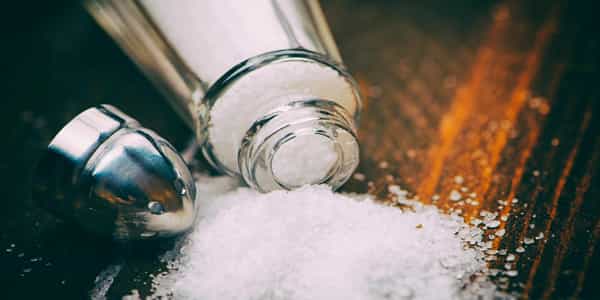A high salt intake has been linked to higher blood pressure and a higher risk of heart disease. However, according to new research, a lack of salt may be just as harmful. Furthermore, the researchers believe that current guidelines for daily salt consumption are too low. At the population level, the World Health Organization recommends 5 g (about one teaspoon) of salt per day, but dietary salt intake in most Western countries is close to 10g per day.
According to new research presented today in a Hot Line session at ESC Congress 20211 and published in the New England Journal of Medicine2, replacing salt with a low-sodium alternative reduces the risk of stroke in people with high blood pressure or a history of stroke.
High blood pressure and an increased risk of cardiovascular disease and premature death are linked to both high sodium and low potassium intake. Salt substitutes, which replace a portion of the sodium chloride in regular salt with potassium chloride, have been shown to lower blood pressure5, but their effects on heart disease, stroke, and death are unknown. Furthermore, there were concerns about causing hyperkalemia in people with chronic kidney disease, which could lead to cardiac arrhythmias and sudden death.
Replacing salt with a low-sodium alternative lowers the risk of stroke in people with high blood pressure or prior stroke, according to recent research.
The Salt Substitute and Stroke Study (SSaSS) compared the effects of low sodium salt substitutes versus regular salt on stroke, cardiovascular events, mortality, and clinical hyperkalemia. The SSaSS trial was a cluster-randomized open trial that enrolled participants between April 2014 and January 2015. Adults with a history of stroke or those aged 60 and up with poorly controlled blood pressure were eligible to participate.
The trial was carried out in 600 villages in five Chinese provinces’ rural areas. Within each province, two counties were chosen to represent the socioeconomic development level of rural counties in that province. Each village recruited approximately 35 people, for a total of 20,995 participants. Participants were assigned in a 1:1 ratio by village to receive a salt substitute or continue to use regular salt.
Participants in intervention villages were given a free salt substitute (about 75% sodium chloride and 25% potassium chloride) to use in place of regular salt and were advised to use it for all cooking, seasoning, and food preservation. To maximize their sodium reduction, they were also encouraged to use the salt replacement more sparingly than they had previously used salt. There was enough salt substitute to meet the needs of the entire household (about 20 g per person per day). Participants in the control villages carried on as usual.

The participants’ average age was 65.4 years, and 49.5 percent were female. 72.6 percent had a stroke history, and 88.4 percent had a hypertension history. During a 4.74-year average follow-up, over 3,000 people had a stroke, over 4,000 died, and over 5,000 had a major cardiovascular event. When compared to regular salt, salt substitute reduced the risk of stroke (29.14 versus 33.65 per 1,000 patient-years; rate ratio [RR] 0.86; 95 percent confidence interval [CI] 0.77-0.96; p=0.006).
In terms of secondary outcomes, salt substitute reduced major cardiovascular events (nonfatal stroke, nonfatal acute coronary syndrome, and vascular death) (49.09 versus 56.29 per 1,000 patient-years; RR 0.87; 95 percent CI 0.80-0.94; p0.001), as did total mortality (39.27 versus 44.61 per 1,000 patient-years; RR 0.88; 95 percent CI 0.82-0.95; p0.001).
In terms of safety, there was no increased risk of serious adverse events associated with clinical hyperkalemia when using salt substitute versus regular salt (3.35 versus 3.30 per 1,000 patient-years; RR 1.04; 95 percent CI 0.80-1.37; p=0.76). There were no other risks discovered.
Professor Bruce Neal of the George Institute for Global Health in Sydney, Australia, the study’s principal investigator, stated: “This study provides clear evidence for a low-cost intervention that could be implemented quickly. A recent modeling study for China estimated that if salt substitutes were proven to be effective, 365,000 strokes and 461,000 premature deaths could be avoided each year in China. 8 We have now demonstrated that it is effective, and these are the only benefits for China. With even greater benefits, salt substitution could be used by billions of more people.”
He continued, saying, “The trial result is especially exciting because salt substitution is one of the few practical methods for changing people’s salt intake. Other salt-reduction interventions have struggled to achieve a large and sustained impact.”
“Most importantly, salt substitute is simple to make and inexpensive. In China, a kilo of regular salt lasts for months and costs about $1.08. “A kilo of salt substitute costs $1.62/kg,” he explained. “Large amounts of salt are typically added by lower-income and more disadvantaged populations during food preparation and cooking. This means that salt substitute has the potential to reduce health inequities related to cardiovascular disease.”
















